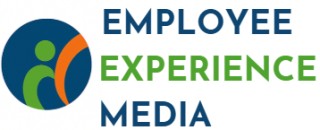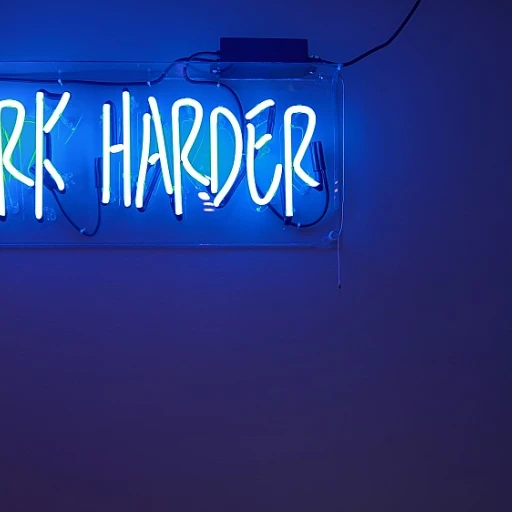
The Purpose of Team Building
Fostering Stronger Connections Within Teams
Team building is a cornerstone of successful organizational development, serving as a purposeful strategy to guide employees toward the realization of improved team dynamics. The primary goal of these activities is to cultivate a sense of camaraderie and foster effective communication among team members. In doing so, a work team can create a more harmonious and productive environment. Team development is not simply about engaging in fun events or organizing a few building activities. It involves crafting experiences that enhance trust, collaboration, and communication skills among participants. This is crucial for improving team performance and ensuring that the group functions cohesively in both short-term projects and long-term goals. Effective team building promotes the continuous improvement of problem-solving abilities within the team. Through targeted exercises and building events, members gain a deeper understanding of each other's strengths and weaknesses, which is essential for optimal team performance. These activities are not merely recreational; they are strategic investments in developing a company's human resources. Incorporating team building into a company's culture requires thoughtful consideration of how these activities can be integrated into daily work life. It's about striking a balance between time spent on such exercises and the overall benefits they bring, as will be explored further in subsequent sections. Understanding the significance of these activities within the broader context of employee experience can be vital, much like understanding the meaning of RTO in the workplace. This holistic approach ensures that teams are not only prepared for immediate challenges but are also positioned for long-term success.Factors Influencing Duration
Key Elements Shaping the Duration of Team Building
When planning team building activities, understanding the factors that influence their duration is crucial. The length of these activities can significantly impact their effectiveness and the overall experience for team members. Here are some key considerations:
- Objectives of the Activity: The primary goals of the team building event will dictate how much time is needed. Activities focused on developing communication skills or enhancing trust may require more time to be effective.
- Group Size: The number of participants can affect how long an activity takes. Larger groups might need more time for everyone to engage fully, while smaller teams can often complete tasks more quickly.
- Complexity of the Activity: Some team building exercises are straightforward and can be completed in a short period, while others, especially those involving problem solving or intricate collaboration, might need extended time.
- Work Environment: The existing company culture and the current dynamics among team members can influence how much time is needed. Teams that already have strong communication and collaboration skills might not need as much time as those still developing these areas.
- Participant Engagement: The level of engagement from team members can also determine the duration. Activities that are fun and engaging might naturally take longer as participants are more willing to invest time.
Balancing these factors is essential to ensure that the team building activities are not only effective but also respectful of the participants' time. Understanding these elements can help in planning events that are both impactful and efficient, ultimately contributing to better team performance and development.
For more insights on how to effectively plan and adapt team building activities, you might find it helpful to explore related resources that delve into the nuances of workplace dynamics.
Types of Team Building Activities
Exploring Various Team Building Formats
When it comes to enhancing team performance and understanding dynamics, the type of team building activities can significantly impact the experience for employees. From adventurous outdoor events to subtle indoor exercises, there's a wide range of activities designed to cater to different work environments and employee preferences. For smaller teams or groups that need to improve trust and communication, traditional team building exercises like trust falls or problem-solving challenges can be quite effective. These activities not only help in building trust but also improve the communication skills of team members, which is essential for long-term collaboration. In larger settings, structured workshops focusing on specific themes such as communication or leadership can help. These sessions encourage team collaboration and provide a platform for teams to address specific issues they face at work. Workshops often have a defined activity length, ensuring that the event is both engaging and productive. Adventure-based team building activities like obstacle courses or group hikes can foster team development by providing shared memorable experiences outside the typical work environment. These activities are often considered fun and can lead to increased motivation among team members. For companies focusing on integrating company culture, creative building events such as art collaborations or charitable activities allow members to bond while contributing to a larger cause. These activities not only enhance bonding and collaboration but also contribute to a positive company image. Whatever the format, the choice of activity should align with the company’s goals and team needs, aiming to create effective team building that supports business objectives. Understanding the unique 'love languages' in workplace interactions can further personalize the experience for employees. For more insights, explore how understanding love languages in the workplace can enhance team relations and effectiveness.Balancing Time and Effectiveness
Finding the Right Balance Between Time and Results
Striking the right balance between the duration of team building activities and their effectiveness is crucial in fostering both immediate and long-term engagement among team members. The goal is to ensure these activities not only bring participants together but also contribute to improving communication skills, trust, and overall team performance. When planning team building exercises, it's essential to consider the time investment versus the anticipated outcomes. An activity that goes on too long might lead to disengagement, while too-short events could leave participants feeling that the gathering was rushed and not meaningful. To hit the sweet spot, focus on:- Purpose Alignment: Clearly define the objectives of the team building event. A well-structured team activity that aligns with the company's culture and goals generally yields better results, maintaining participants' interest throughout the duration.
- Diverse Activities: Incorporate a mix of short and long-term team development activities. This could range from quick, fun icebreakers to more in-depth problem solving and collaboration exercises. This ensures the experience remains dynamic and engaging, catering to various group dynamics and preferences.
- Feedback and Adaptation: Continuously gather employee feedback to assess the effectiveness of the building activities. Adjust the duration and format accordingly, ensuring the activities remain relevant and enjoyable. Tailoring the experiences based on feedback will help in creating more effective team building sessions that resonate well with team members.
Employee Feedback and Adaptation
The Importance of Feedback in Team Building
Understanding the impact of team building activities on employees is essential to gauge their effectiveness. Feedback provides invaluable insights into what activities are truly resonating with team members, which can lead to significant improvements in future events.
First and foremost, gathering feedback from participants allows facilitators to identify which activities succeeded in fostering better communication skills and trust among team members. This feedback can highlight areas of improvement and point out activities that may not have engaged employees as expected.
Adjusting Activities for Better Outcomes
Feedback doesn't only serve to evaluate what has been done but also aids in adapting and tailoring activities to fit the unique dynamics of each team. By listening to employees, organizers can make informed decisions on modifying the approach and structure of activities to better suit the group's needs, whether it involves more problem-solving exercises or increasing the element of fun to boost morale.
Furthermore, incorporating employees' suggestions can help in crafting customized team building events that are not only more enjoyable but also more effective in achieving the desired outcomes. Over time, this responsiveness can contribute to a more cohesive and high-performing work team, where individuals feel valued and heard.
Long-term Benefits of Employee Feedback
Engaging team members through regular feedback sessions enhances their sense of ownership and commitment to the overall team development process. This participatory approach to team building can cultivate a positive company culture, which is instrumental in driving long-term success. By continually refining the duration and nature of team building activities based on employee inputs, companies can ensure that they not only meet immediate team performance goals but also contribute to sustainable team growth.
Ultimately, by prioritizing the feedback from those participating in these activities, organizations can create a more rewarding and effective team building experience that supports their strategic objectives while keeping staff engaged and motivated.
Case Studies and Examples
Learning from Real-Life Team Building Success Stories
Understanding how various companies have implemented team building activities successfully can provide valuable insights into designing effective programs. These case studies highlight the importance of tailoring activities to fit the unique needs and culture of your organization.
One common aspect among successful team building events is their focus on enhancing key team dynamics like communication and trust. For example, a leading tech company conducted problem-solving exercises that required employees to collaborate and rely on each other's input. The result was a noticeable improvement in team communication skills and overall efficiency.
In another instance, a retail company organized a series of fun and engaging activities designed to break down barriers between departments. These events helped foster strong interpersonal relationships and built a sense of camaraderie among team members who previously had limited interactions.
Employee feedback is also a crucial consideration. A healthcare organization collected input from participants after each event to ensure the activities were meaningful and engaging. Based on the feedback, they adjusted the activity length and complexity to better suit team preferences, resulting in increased participation and enthusiasm.
Learning from these examples, it is evident that successful team building involves not only planned activities but also a willingness to adapt and evolve according to employee needs and feedback. This adaptive approach not only boosts group dynamics but also contributes positively to company culture and long-term team development.













